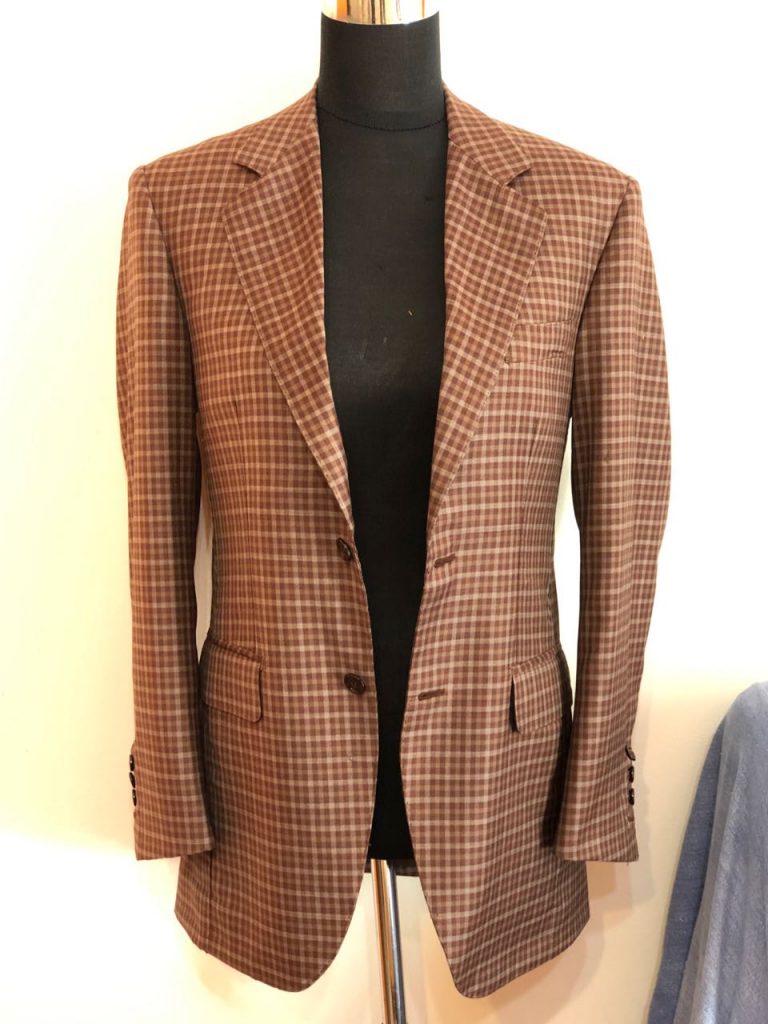
In 2017, I discovered a tailoring circle in the small southern Sicilian town of Ragusa. My trip was initially prompted by coming across the name of Giuseppe Schembari. His signature appeared on a certificate for the jury-reviewed Forbici d’Oro selection for Sicily in 1986. This certificate was hanging in the workshop of Giovanni Cinturrino, a tailor in Messina featured in my book Sleevehead’s Guide to Sicilian Tailors (SGST). SGST is the first and only comprehensive guide to Sicilian tailoring.
I wasn’t sure what I would find in Ragusa but I decided to find out for myself. What transpired in my initial trip led to a new section on Ragusa in the 2nd edition of SGST and an entry on Giovanni Licitra, a former tailor.

For my subsequent visits, I was determined to learn a bit more and see if there was a Ragusan way of tailoring. The best way to do that of course was to order a jacket and get to know the tailors who are still working in Ragusa. I had the wonderful opportunity and honor to meet with two tailors featured in this video interview – Giuseppe Laterra who is retired and Lorenzo Sparatore who is very much active and in the early stages of his promising career.

They were gracious enough to be interviewed in the workroom of maestro Laterra. Besides the interview, I also got my second fitting done of a gunclub jacket made by the maestro himself despite his retirement. The jacket is a wonderful testament to Sicilian tailoring and its inherent variety – softly structured without being too soft or too structured.
Ragusan tailoring is more than simply soft tailoring as it is commonly called. It is done with a bit more line, a shade more definition and a touch more bite than its sartorial cousins in southern Italy. Yet it remains remarkably soft. In fact, I am describing my gun club jacket from Laterra.

If I had a time machine, I would go back to the 1950s or 1960s since at that time Ragusa was home to a vibrant, active tailoring circle. Back then, similar tailoring circles dotted the island in cities large and small. In my view, the work of a Sicilian tailor like Laterra steeped in this remarkable milieu – in the golden age of Sicilian tailoring – cannot be surpassed. Or I should perhaps say I have not yet found better.
One of my favorite moments in the interview is when Lorenzo Sparatore talks about the importance of place in tailoring. It confirms an intuition I described when I wrote Sleevehead’s Guide to Sicilian Tailors and which I further developed in my recent piece on craftsmanship. In an era of global commerce and chain stores from Bali to Berlin, cities and villages can easily blur into each other. But the identity and history of a place still vitally matters in artisanal work, particularly in men’s tailoring.

The other highlight of course is maestro Laterra’s magnificent Donegal tweed sports jacket with a tangerine ground.
So is there a distinctive Ragusan style of tailoring? As you can watch in the excerpt below, the answer is not black or white. This is perhaps the true meaning of Ragusan tailoring and Sicilian tailoring more broadly. Each is a specific, remarkable blend of tailoring habits, practices and styles. At its height this sartorial blending happened in nearly every Sicilian city, town or village.
This, I think, is the genius of Sicilian tailoring – the ability to absorb and express subtle diversity and variations within a seemingly fixed tradition.
Even if you have no interest in men’s tailoring the town of Ragusa is well-worth the visit. The town itself is beautiful and designated a UNESCO World Heritage site for its historical import and architectural heritage. In my view, it is up there with Taormina, probably the most visited tourist spot in Sicily outside of the big cities. Ragusa is far less crowded and rather overlooked by many tourists.
View of Ragusa Ibla. Photo credit: Juhn Maing. A view of the foothills around Ragusa. Photo credit: Juhn Maing. Duomo of San Giorgio, Ragusa Ibla. Photo credit: Juhn Maing. Cathedral of San Giorgio, Ragusa Ibla. Photo credit: Juhn Maing. A view of Laterra’s now closed workshop in Ragusa. Photo credit: Juhn Maing. Ragusan sweets at Pasticceria Olimpia. Photo credit: Juhn Maing.
If you wish to do something different than the typical tourist itinerary in Sicily, take it upon yourself to visit this Sicilian gem.
To view the full 22 minute interview below, please log in or become a Sleevehead Forum member.






Why not make the full interview available to everyone?
I don’t believe there is a benefit to the artisan or to myself in offering everything I create for free. I could be mistaken so I’m open to hearing a different viewpoint.
As it stands, my aim is to attract and connect serious, paying and informed customers to the tailors. Part of that is offering premium content. Keep in mind that 99 percent of Sleevehead content is free.
If you are serious, you’ll make the effort to buy the $25 guidebook (which grants you access to premium content) and fly to Sicily. Or you’ll order through Sicilian Reserve where I organize tailor visits to the US.
Additional reasons can be found on both Sleevehead and Sicilian Reserve: (1) my post on 10 menswear brands to know and (2) my recent post on Sicilian Reserve.